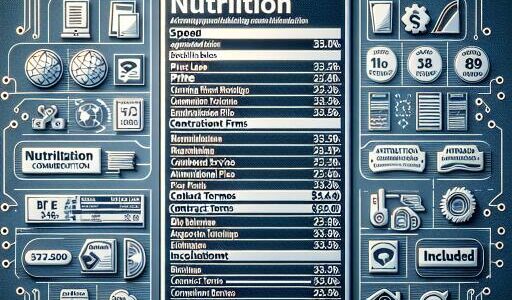Exploring MySQL for High Performance Embedded Database Solutions
For software developers and technology providers looking for a reliable database solution that promises high performance with minimal administration, the MySQL Classic Edition emerges as a compelling choice. Tailored specifically for Independent Software Vendors (ISVs), Original Equipment Manufacturers (OEMs), and Value-Added Resellers (VARs), this edition is optimized for developing applications with intensive read operations using the MyISAM storage engine. It stands out for its proven performance credentials and its straightforward, maintenance-free operation.
The exclusive availability of MySQL Classic Edition to ISVs, OEMs, and VARs for embedding in their applications illustrates MySQL’s commitment to supporting the technical and operational needs of developers and enterprises. This focusing ensures that specialized applications can leverage a powerful, reliable database backbone without incurring the complexities and overheads often associated with database administration and scaling.
However, the journey with MySQL does not end with the Classic Edition. For those developers and organizations whose needs evolve beyond the Classic Edition’s offerings, MySQL provides a clear and easy-to-navigate path towards more advanced solutions. Upgrading from the Classic Edition to the MySQL Standard Edition, MySQL Enterprise Edition, or MySQL Cluster Carrier Grade Edition opens up a broader array of features and capabilities designed to tackle more demanding database management tasks, enhance security, and ensure greater scalability and availability for critical applications.
With the release of MySQL 9.0, the landscape of available features, as well as configuration and management options, has undergone significant updates from its predecessor, MySQL 8.4. These updates are not just about adding new features but also about refining existing functionalities, deprecating older, less efficient options, and in some cases, removing features to streamline and improve the overall database management experience. Enhancements in MySQL 9.0 reflect a commitment to addressing the evolving needs of modern applications and the development communities that create and support them.
Key among these changes is the introduction of new server options and variables, designed to give developers and administrators more fine-tuned control over database operations and performance. Equally important are the deprecations and removals of certain options and variables. These decisions, driven by the goal of modernizing the database environment, pave the way for more streamlined, efficient, and secure data management practices. For a comprehensive overview of these updates, diving into the specifics of what has been added, changed, or removed is beneficial for those looking to optimize their use of MySQL 9.0 in comparison to MySQL 8.4.
In summary, MySQL continues to evolve as a robust, flexible database solution ideal for embedded applications. With its clear upgrade paths and continuous enhancements, including those seen in MySQL 9.0, it remains a top choice for developers and enterprises seeking to build or enhance read-intensive applications with a reliable, high-performance database engine.










